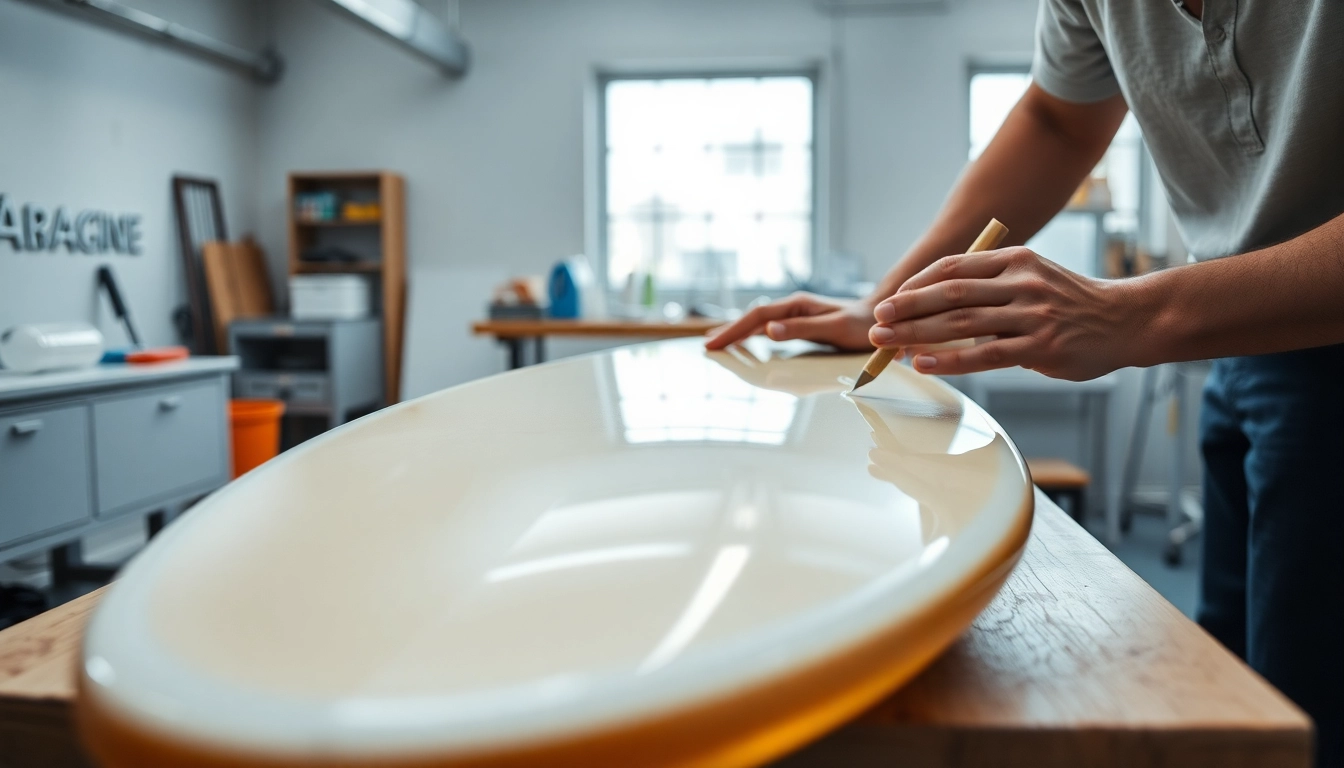
Choosing the Right Laminating Resin for Your Projects
Understanding Laminating Resin
What is Laminating Resin?
Laminating resin is a type of synthetic resin that is used primarily in the manufacturing of fiberglass-reinforced composites. This resin is essential in providing structural integrity and durability to composite materials. Positioned at the core of many applications, laminating resin serves as a bonding agent for various substrates, often combining glass fibers with the resin to create a composite that is both strong and lightweight.
Types of Laminating Resin
There are several types of laminating resin, each designed for specific applications and performance characteristics. The most common types include:
- Polyester Laminating Resin: Often utilized in marine and automotive applications, this resin offers excellent adhesion, low cost, and simplicity in application.
- Epoxy Laminating Resin: Known for its superior strength and chemical resistance, epoxy laminating resin is ideal for high-performance applications, including aerospace and automotive components.
- Vinyl Ester Laminating Resin: This variety combines the advantages of polyester and epoxy, featuring excellent thermal resistance and durability. It is often used in harsh environments.
Key Applications for Laminating Resin
Laminating resin is employed across various industries for numerous applications:
- Marine Industry: Laminating resin is extensively used in boat building to create strong, water-resistant hulls.
- Automotive Manufacturing: In the automotive sector, laminating resin assists in fabricating lightweight body parts and reinforcement components.
- Aerospace Engineering: High-performance laminating resins are crucial for manufacturing aircraft components that endure extreme conditions.
- Sports Equipment: The resin is used in the production of high-quality sporting goods, where light weight and strength are priorities.
Benefits of Using Laminating Resin
Physical Properties and Performance
The choice of laminating resin can significantly affect the physical properties of the final product. Characteristics such as tensile strength, flexibility, and temperature resistance can be tailored to meet specific requirements. For instance, epoxy laminating resins generally offer better adhesion, chemical resistance, and durability compared to polyester laminating resins.
Customization and Versatility
Laminating resin can be customized with additives to enhance properties like UV resistance, fire retardancy, and color. This versatility allows industries to create specialized products that meet unique demands.
Cost-effectiveness in Projects
While some laminating resins may carry a higher initial cost, they often result in lower overall project costs due to their durability and performance. For example, less need for maintenance and repairs can offset the upfront investments in higher-quality resin materials.
How to Choose the Right Laminating Resin
Assessing Project Requirements
When selecting a laminating resin, it’s crucial to understand the specific requirements of your project, such as load-bearing needs, environmental conditions, and physical properties desired. An accurate assessment will guide you to the right type of resin that fulfills all specifications.
Evaluating Environment and Setting
The environment where the laminated product will be used is a critical consideration. For instance, laminating resins intended for marine applications must withstand moisture and salt exposure, while those for automotive applications should be resistant to fuels and oils.
Comparing Different Laminating Resin Types
Not all laminating resins are created equal. When comparing options, consider factors such as curing time, application methods, and overall strength. Understanding these differences will help you select the most suitable resin type for your specific application.
Best Practices for Applying Laminating Resin
Preparation and Setup
Successful application of laminating resin begins with thorough preparation. This includes ensuring that all surfaces are clean, dry, and free of contaminants. Proper mixing of the resin with the hardener, when applicable, is also crucial for achieving optimal performance.
Application Techniques and Tips
Applying laminating resin requires careful technique. Utilize brushes, rollers, or spray systems depending on the project’s needs. Ensure even application to avoid weak spots. Working in a controlled environment can help prevent issues related to temperature and humidity.
Post-Application Finishing Procedures
After applying the resin, follow up with appropriate finishing techniques, such as sanding or coating. This not only enhances appearance but also contributes to the longevity and durability of the laminated product.
Performance Metrics for Laminating Resin
Testing for Strength and Durability
It’s essential to conduct performance tests on cured laminating resin to assess its strength and durability. Common tests include tensile strength, impact resistance, and thermal stability testing, which should be aligned with industry standards.
Common Issues and Solutions
Common problems associated with laminating resin application can include bubbling, improper curing, and surface imperfections. Identifying factors such as humidity and temperature variations can help mitigate these issues. Specific solutions may include adjusting application techniques or using appropriate curing agents.
Long-term Care and Maintenance
To maintain the integrity of laminated products, regular inspection and maintenance are crucial. Depending on the application, additional protective coatings may enhance durability against environmental factors.
